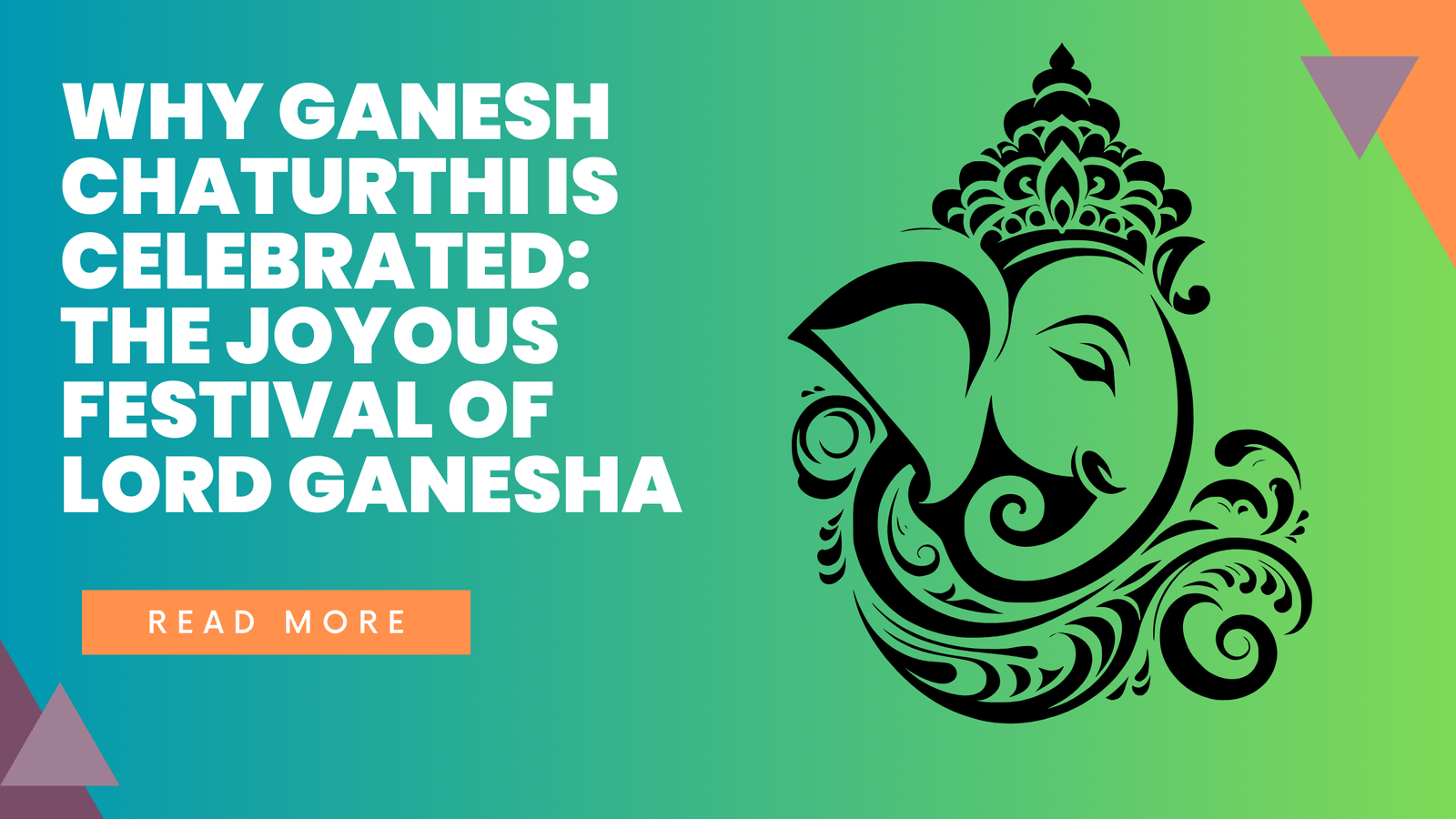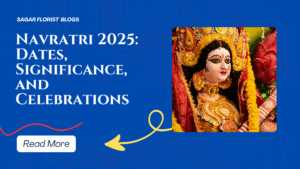Why Ganesh Chaturthi is Celebrated: The Joyous Festival of Lord Ganesha
Ganesh Chaturthi is one of the most widely celebrated festivals in India and among Hindus worldwide. This vibrant festival marks the birth of Lord Ganesha, the beloved elephant-headed god of wisdom, prosperity, and new beginnings. With its grand processions, colorful decorations, and joyous celebrations, Ganesh Chaturthi has become not just a religious event but also a social and cultural phenomenon.
But what makes this festival so special? Why do millions of people come together every year to celebrate the arrival of Lord Ganesha? In this blog, we’ll delve into the history, significance, rituals, and cultural importance of Ganesh Chaturthi.
1. The Story Behind Ganesh Chaturthi: The Birth of Lord Ganesha
Ganesh Chaturthi marks the birth of Lord Ganesha, the son of Lord Shiva and Goddess Parvati. According to Hindu mythology, the story of Ganesha’s birth is both intriguing and symbolic.
The Birth of Lord Ganesha
- Parvati’s Creation: The most popular myth surrounding Ganesha’s birth involves Goddess Parvati, who, in her desire for a son, created Ganesha from the sandalwood paste she used for bathing. She breathed life into the statue and instructed him to guard the door while she took a bath.
- The Unfortunate Incident: When Lord Shiva, Parvati’s husband, arrived at the door and was denied entry by Ganesha, he became enraged. In the ensuing confrontation, Lord Shiva, not recognizing Ganesha as his son, beheaded him in anger.
- Restoring Ganesha’s Life: Upon learning that Ganesha was his son, Lord Shiva, filled with remorse, ordered his followers to bring back the head of the first creature they encountered. They brought the head of an elephant, which Shiva then attached to Ganesha’s body, bringing him back to life. This event gave Ganesha his iconic elephant head and began his journey as the deity of wisdom, remover of obstacles, and patron of the arts.
The Symbolism of Lord Ganesha’s Appearance
- Elephant Head: The elephant head of Ganesha is symbolic of wisdom and intelligence. The large ears signify the importance of listening, while the trunk represents adaptability and the ability to overcome challenges.
- Mouse as a Vehicle: Ganesha’s mount, the mouse (or Mooshak), symbolizes humility and the ability to navigate through life’s obstacles. It reminds devotees that even the most powerful deities have the capacity to use the smallest of creatures to fulfill their duties.
2. The Significance of Ganesh Chaturthi
Ganesh Chaturthi holds profound spiritual and cultural significance. It is a festival that marks new beginnings, spiritual growth, and the removal of obstacles.
Symbol of New Beginnings
- Lord Ganesha is often worshipped at the start of new ventures, be it a new job, business, or project. The festival of Ganesh Chaturthi marks the start of a fresh journey and is an auspicious occasion for starting new endeavors. Devotees believe that by invoking Lord Ganesha during this time, they will be blessed with success, prosperity, and the removal of hurdles in their path.
Removing Obstacles (Vighnaharta)
- Lord Ganesha is famously known as the Vighnaharta, or the remover of obstacles. Ganesh Chaturthi is celebrated with the belief that Lord Ganesha, through his divine power, helps his devotees overcome challenges and difficulties in both their material and spiritual lives. Whether it’s personal, professional, or academic obstacles, Ganesh is invoked to clear the path for success and growth.
The Significance of Immersion
- At the end of the 10-day festival, the idol of Ganesha is immersed in water (known as Ganesh Visarjan). This symbolizes the cycle of life and death, as well as the belief that Ganesha’s blessings will continue to guide his devotees even as his physical form dissolves. The immersion also signifies the idea of transience and the impermanence of material existence.
3. The Rituals and Celebrations of Ganesh Chaturthi
Ganesh Chaturthi is celebrated with immense enthusiasm and devotion. The festival’s grandeur is marked by the installation of Lord Ganesha idols in homes and public places, followed by elaborate rituals, processions, and celebrations.
Preparing for the Festival
- Ganesha Idols: Before the festival begins, devotees purchase or create idols of Lord Ganesha. These idols can range from small, simple representations to large, intricately designed statues. People often decorate their homes and community spaces with these idols, setting the stage for the rituals to come.
- Prayers and Offerings: The main ritual during Ganesh Chaturthi is the prayer (puja) offered to Lord Ganesha. Offerings typically include flowers, fruits, sweets, especially modaks (Ganesha’s favorite sweet), and incense. Devotees chant mantras and sing devotional songs, seeking Lord Ganesha’s blessings for prosperity, wisdom, and the removal of obstacles.
Public Celebrations and Processions
- In many regions, especially in Maharashtra, Goa, and Tamil Nadu, Ganesh Chaturthi is celebrated on a grand scale. Public celebrations include massive processions, where large statues of Lord Ganesha are paraded through the streets, accompanied by music, dancing, and chanting.
- Ganesh Mandals: Community groups, known as Ganesh Mandals, take it upon themselves to install large idols in public spaces, creating a sense of unity and collective devotion. These Mandals host various events, including cultural programs, performances, and social gatherings.
Ganesh Visarjan: The Grand Farewell
- After 10 days of worship, the idols are taken to rivers, lakes, or seas for immersion in a ritual called Ganesh Visarjan. The immersion symbolizes the return of Ganesha to his heavenly abode and is accompanied by chants of “Ganapati Bappa Morya, Pudhchya Varshi Laukariya”, meaning “Hail Lord Ganesha! Come again next year”. This marks the end of the festival, but also signifies the devotees’ hope to receive Ganesha’s blessings once again the following year.
4. Cultural Importance of Ganesh Chaturthi
Ganesh Chaturthi is not just a religious festival—it is also an integral part of India’s cultural fabric. The festival brings people together across communities, regions, and social boundaries.
Unity and Social Harmony
- Ganesh Chaturthi promotes unity and social harmony. People from all walks of life come together to celebrate, irrespective of their social or economic status. The communal spirit of the festival strengthens bonds between individuals and communities.
Environmental Awareness
- In recent years, there has been a growing awareness about the environmental impact of the festival. Traditionally, the idols used during Ganesh Chaturthi were made of clay, but in some places, plastic and other non-biodegradable materials were used. This led to pollution, particularly in water bodies during immersion. As a result, there has been a shift toward eco-friendly idols made of natural, biodegradable materials, as well as the promotion of cleaner immersion practices.
5. Conclusion: The Everlasting Joy of Ganesh Chaturthi
Ganesh Chaturthi is much more than a religious occasion. It is a celebration of new beginnings, spiritual renewal, and community togetherness. Through the worship of Lord Ganesha, devotees seek his divine blessings for wisdom, success, and the removal of obstacles, while also coming together in joyous celebration.
The festival’s deep cultural significance and vibrant celebrations make it one of the most beloved festivals in India and around the world. Whether through intimate family prayers or grand public processions, Ganesh Chaturthi fills the air with devotion, joy, and hope, reminding us of the eternal presence of Lord Ganesha in our lives.
Would you like to learn more about the different ways Ganesh Chaturthi is celebrated across India or explore other festivals in Hinduism? Let me know!






